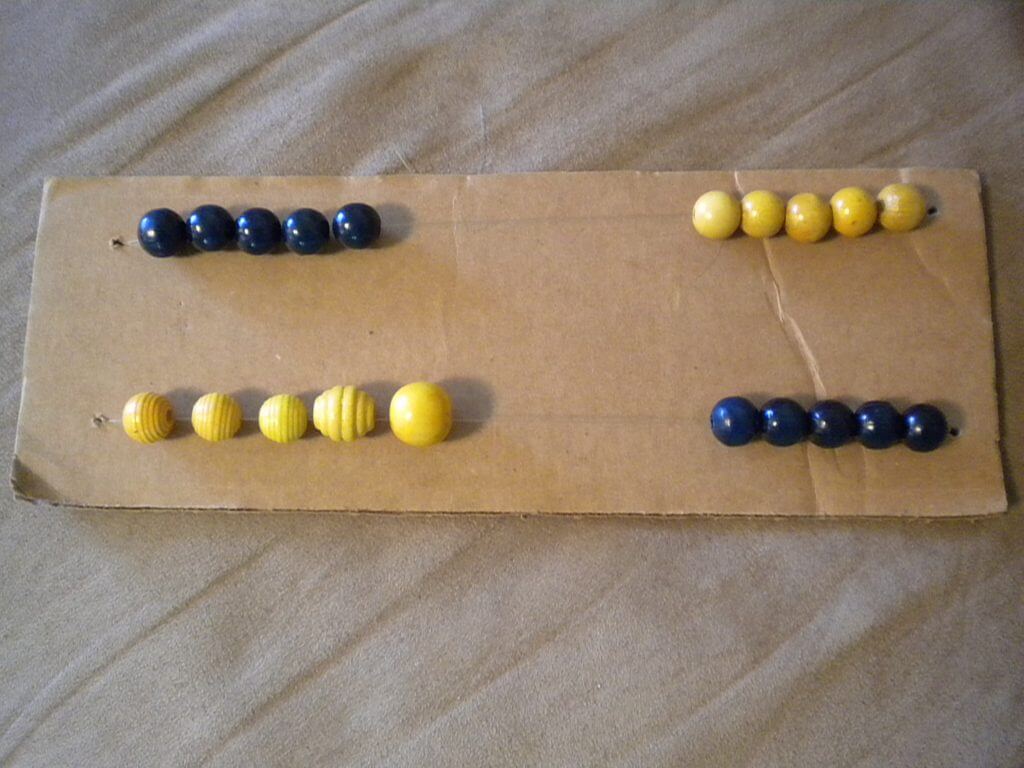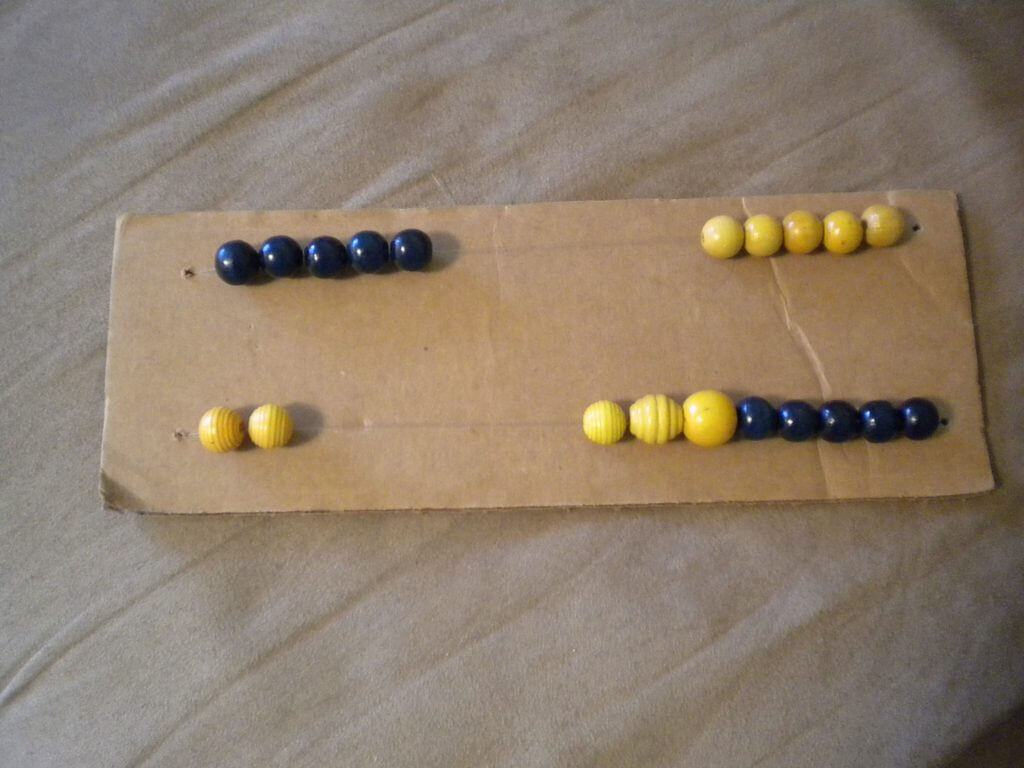Rekenreks: A Visual Aid to First Grade Math
★★★★★
Last year, I was introduced to the book Number Talks: Helping Children Build Mental Math and Computation Skills by Sherry Parrish. While this book has many ideas for helping your students learn number sense, I want to highlight the section on using rekenreks. Rekenreks are similar to an abacus, although much more economical.
A rekenrek is simply two parallel rows of ten beads each, with the first set of five represented as one color and second set of five represented with a different color.

Rekenreks are a great way to enhance your lower grade math classes; they appeal to your visual learners. They are also a great help in teaching the following math concepts:
Counting onDeveloping number sense begins in a very basic way in my classroom at the beginning of the school year. We work at recognizing numbers that I show on the rekenrek. When a student learns that one unit of color equals five (“subitizing” as Number Talks terms it), they typically can count on pretty easily.
A unit of blue (five) plus two yellows equals seven, etc. I try to flash the rekenrek quickly enough so they don’t have time to count each individual bead, but are forced to subitize to figure the answer.

I will also ask my students to show me various numbers on their rekenreks. Show me 6, for example. In this way, they develop a sense for the different combinations of beads (numbers) which will equal six.
Addition/SubtractionOf course, having these handy to do the daily fact practice in their Math lessons is always helpful for your first graders. It’s also a quick and easy way for me to discuss our new facts for the day, without having to scramble around the classroom gathering stuffed animals, pencils, or Legos to illustrate 4 + 3.
Missing Numbers in FactsAnd of course, those killer problems first graders face: __- 4=5. Yes, how does one effectively teach those? Rekenreks certainly haven’t solved all of our issues with this kind of problem, but they certainly give an easy way for my littles to experiment to find the missing number.
Make Your OwnIt’s easy to create your own rekenreks, although a bit time consuming, so enlisting a few friends or a teacher’s aide is a benefit. With some cardboard, fish line, large beads, and hot glue, you can create your own stash. (You never know what might be lurking in the corners of your school’s supply closet!). Poke two holes on each side of the rekenrek. Thread a needle with fish line, poke it through the hole on the right side, string the beads, and finally poke it through the hole on the left. Tie the ends of the fish line securely in the back of the rekenrek and add a bit of hot glue to hold the knot. Fish line seems to be fairly durable and hot glue holds the knots in place so that your rekenreks stay intact.
Enjoy this added visual to your math classes!
Related Items
Miss Yolanda
8 years ago
I like this idea and will have to give it a try.
Christine Weaver
8 years ago
Thanks for that! Our daughter has only 2 fingers on each hand and we realized that it made learning math facts just a tad more difficult. I am constantly on the look out for ways to reinforce her classroom knowledge.